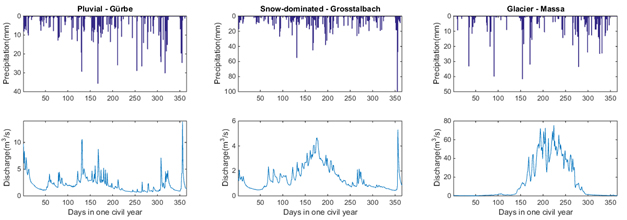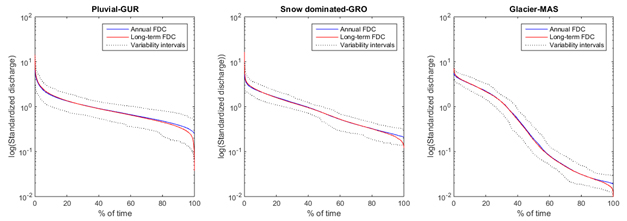This research project is being developed under the framework of the IST-EPFL joint doctoral initiative and is being hosted by the Laboratory of Ecohydrology (ECHO) and the Laboratory of Hydraulic Constructions (LCH) in EPFL. The research is embeeded in the Swiss Competence Center for Energy Research – Supply of Electricity (SCCER-SoE) that researches, develops and tests new technologies and optimizes existing infrastructures for energy production in the future. In the field of hydropower production, the need of reliable quantification of water resources available for hydropower production and the existing uncertainties was identified. Flow duration curves (FDCs) are a fundamental tool for the analysis of water availability at the catchment scale. They can be obtained empirically, from data, or from different types of hydrological models, which are essential for FDC estimation in ungauged catchments. The project aims to develop a method to obtain FDCs in ungauged Alpine catchments and to characterize and quantify the uncertainties of the FDCs obtained from this model. The model being developed is based on a probabilistic characterization of flows that allows the modeling of seasonal probability density functions of the mean daily discharges based on a small number of parameters. This model is suitable for pluvial regimes and has already been extended for snow-dominated regimes during winter. Switzerland has three main types of hydrologic regimes: pluvial, snow dominated and glacier that have different mechanisms of discharge production. Figure 1 shows the response of catchments to precipitation inputs. Accordingly, the model will be adapted to suit all the seasons for those three regimes.

Figure 1: Discharge response to precipitation events in catchments with different types of hydrological regimes in Switzerland
The extension of the model are going to be followed by the study of the uncertainties in the FDCs. There are two main type of uncertainties, the ones related to the natural variability of the discharges happening in nature, shown in Figure 2, and modelling uncertainties that happen because of the uncertainties in the model, e.g. uncertainties in parameters and assumptions. The modelling uncertainties will be quantified for the fully developed model.

Figure 2: Natural variability intervals for discharges in catchments with the different hydrologic regimes in Switzerland.
Finally the model will be regionalized to be able to predict FDCs in ungauged catchments for all the regimes in Switzerland. The final model will be applied in a complex case study of hydropower plant to be selected in Switzerland.

